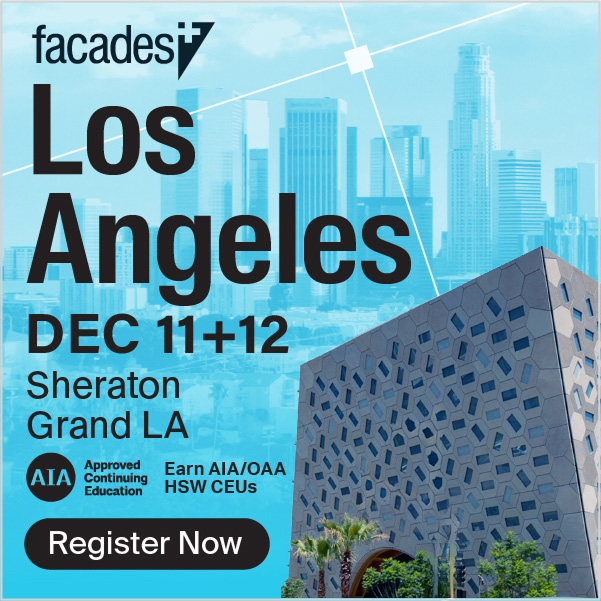
Architect: Pelli Clarke & Partners
Location: Chengdu, China
Completion Date: 2022
Pelli Clarke & Partners (PCP) recently completed work on the Chengdu Natural History Museum, a new institution for science and culture in China’s fourth-most populous city. The building’s complex, multifaceted form evokes the rugged topography of the Sichuan region’s mountain ranges and is composed of locally sourced granite. The 540,000-square-foot project features large exhibition spaces, shops, a cafe, cinema, and expansive public green space.
To emulate a starry night sky or snow-covered mountains (depending on the time of day), an LED backlight system was installed within perforations applied along the granite facade. The perforations range in size from one to ten inches. Larger perforations were cut using a water jet while the finer details were carried out through precision drilling. The various rotations and orientations of three original panel designs informed the pattern. To reinforce the perforated granite aluminum plates were placed behind it.

The facade consists of a double layer rainscreen. An approximately 26-inch void between the two layers contains the building’s LED lighting system and allows space for maintenance. Behind the LED fixtures a roughly 14-inch thick inner wall contains structural steel tubes and has been double insulated, sealed, and waterproofed. The rainscreen wall, mimicking the geological formations created by shifting tectonic plates, contains over 70 folded surfaces and more than 6,000 outer curtain wall supports. High tech machinery was utilized to install the complex steel structure undergirding the mountain forms. Steel was selected over concrete for the structure to reduce embodied carbon.



